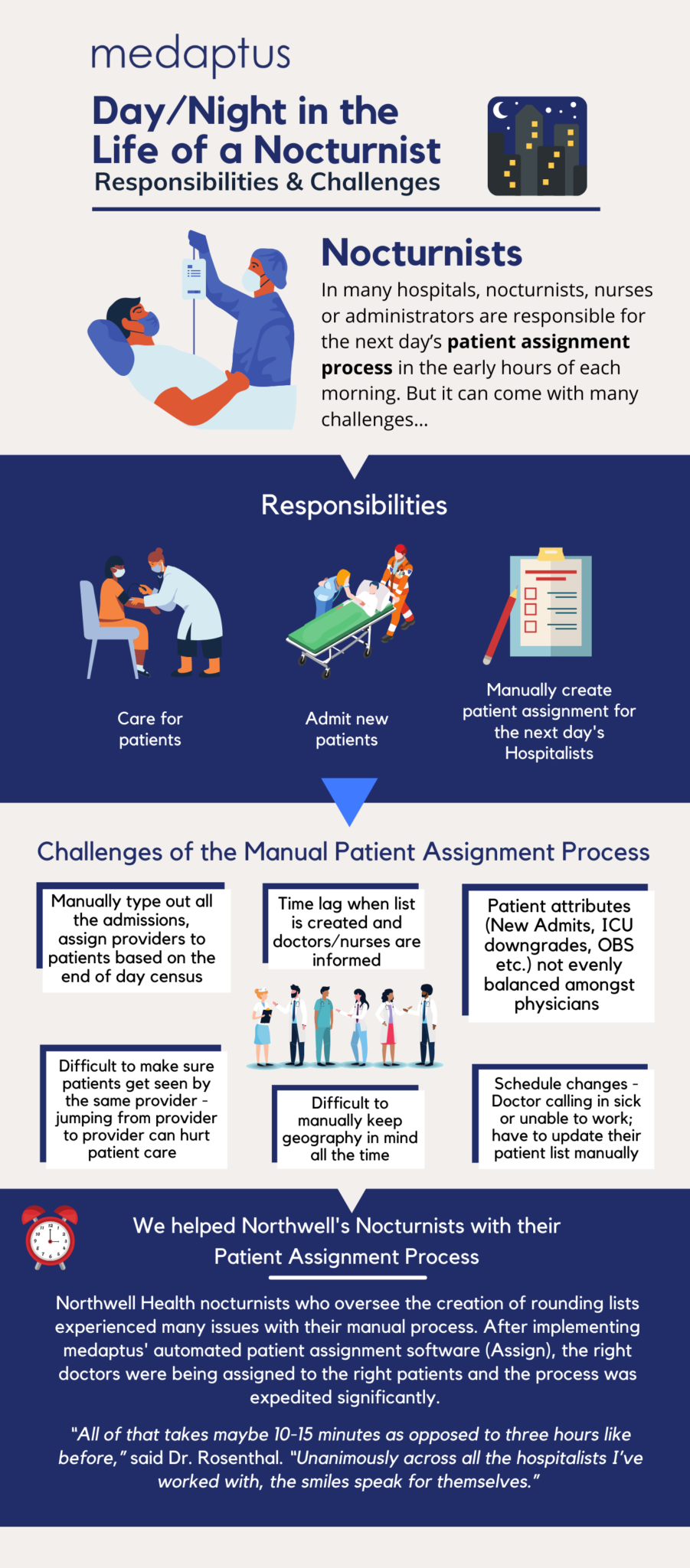In many hospitals, nocturnists, nurses or administrators are responsible for the next day’s patient assignment process in the early hours of each morning.
When I spoke to Northwell South Shore University Hospital’s nocturnists, they said that amidst seeing patients themselves during their night shift, they’re also finding time to manually put together the daily rounding list for the daytime hospitalists.
But here’s the thing: there’s only so much that a pen and paper, or an Excel spreadsheet, can do.
Creating the rounding list like this wasn’t so simple. Two of Northwell’s doctors, who oversee this, Dr. Sharma and Dr. Rosenthal, said they dealt with a lot of challenges like:
- A physician called in sick and the rounding list needed to be manually updated to reassign his/her patients
- The volume of patients coming in increased, as did the number of rounders and admitters, making the manual process unsustainable
- Nocturnists had to rush between seeing patients themselves and going back to their list-making duties
- Providers complained about having to round on patients in multiple buildings
- It was hard to keep track of where patients were especially as the week went on and patients were moving between departments
“As our census grew and the number of rounders and admitters grew, we outgrew our processes of manually assigning patients in the morning. We knew we had to get something that would help us in terms of efficiency and patient safety,” said Dr. Rosenthal, who is the lead nocturnist at Northwell.
The impact on patient safety and provider workloads
Physician burnout is now the number one concern amongst hospital CEOs, a new study has found. And amongst labor shortages from the COVID-19 pandemic, it’s a difficult time to attract, train and retain talented providers.
When hospitalists and nocturnists are also responsible for creating the daily rounding list and for the entire patient assignment process, it adds more tedious and time-consuming manual work to their busy day, time that could be spent on patient care instead.
“With our old manual way, we had to type out all the admissions, figure out which provider was going to be going with which patient, based on what the end of day census was and if there were any secondary needs to consider (such as the patient needing to be discharged that day, or a family issue, or if they needed to stay with a certain provider),” said Dr. Rosenthal.
“After all the patients were assigned, that would get emailed to our logistics person who would make manual changes, then get that information in our EMR. But there’s also a time lag when the email is sent and the patients are updated in the system, so nurses would have to call the doctors and try to figure out who needed to be seen by who.”
That’s why Northwell’s doctors started using Assign, our automated patient assignment software, to not only alleviate the burden of hospitalists and nocturnists having to go through the patient assignment process every day, but also to be able to take into account factors like geography and continuity of care, that were difficult to do manually.
“It would be impossible to keep geography in mind, manually, without having an entire FTE do that all night long,” said Dr. Rosenthal. “It wouldn’t be possible without an automated program. For example, we could start off one day of the week doing it all about geography, but then as the week goes on, it’s hard to keep track manually of where patients are going.”
That, along with the time savings, has made a huge difference in their nocturnists’ lives.
“All of that takes maybe 10-15 minutes as opposed to three hours like before,” said Dr. Rosenthal. “Unanimously across all the hospitalists I’ve worked with, the smiles speak for themselves.”
What does your patient assignment process look like today? Who is responsible for creating it? This “day in the life” infographic might look really familiar.

Get the latest updates and news delivered to your inbox.
Subscribe to our newsletter today.

![Staying up all night and working on your patient assignment lists all morning? A day/night in the life of a nocturnist [Infographic]](https://www.medaptus.com/wp-content/uploads/2022/02/depositphotos_6686794-stock-photo-blurred-doctors-surgery-corridor.jpg)



